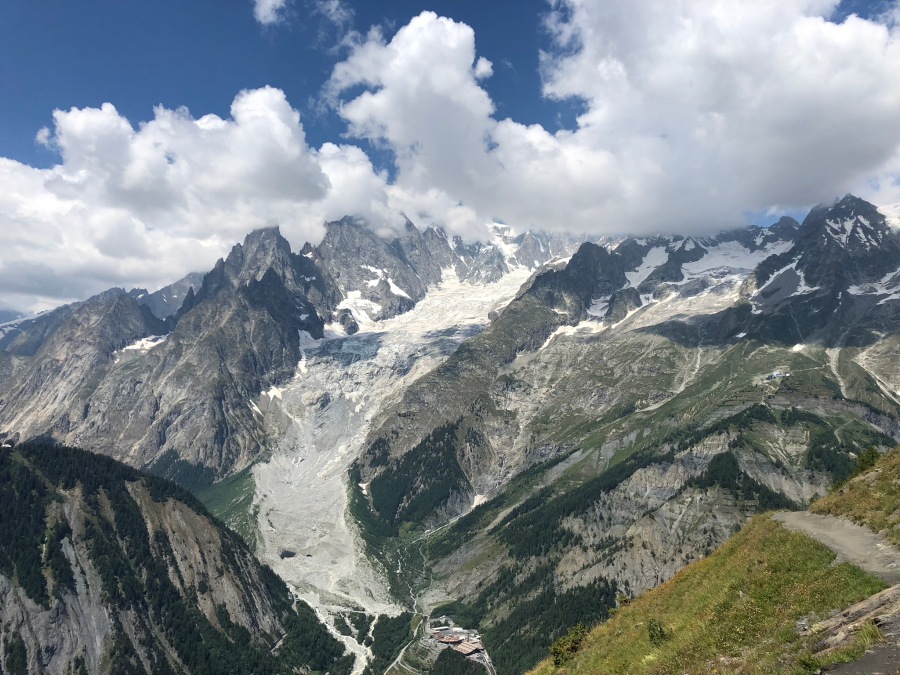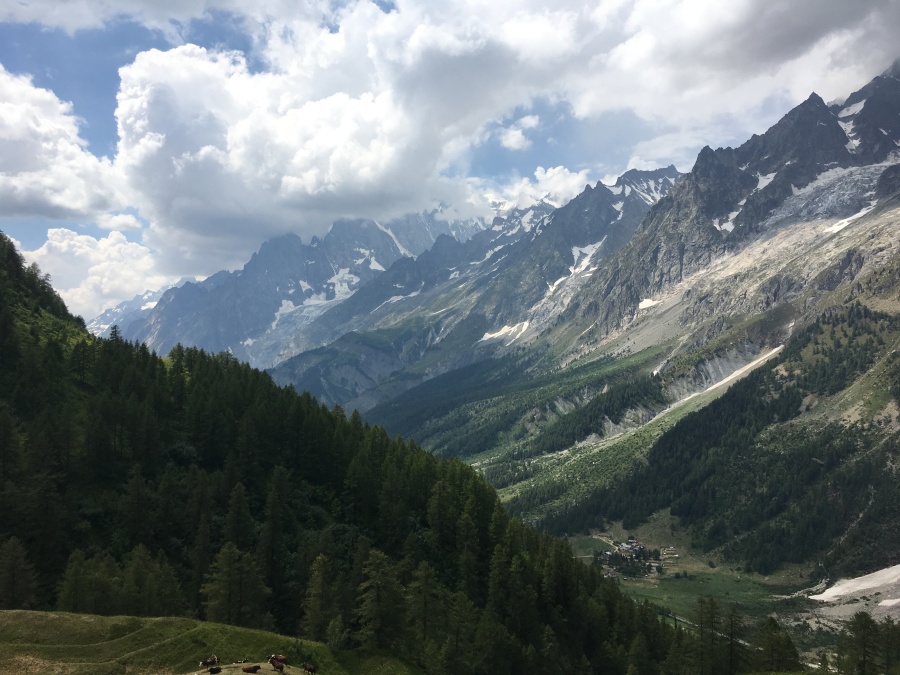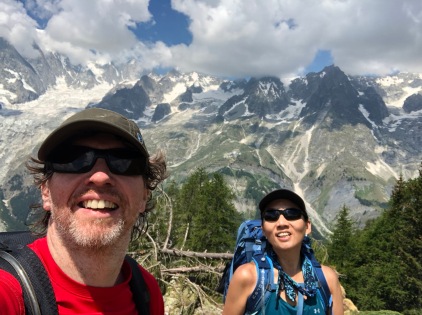Glacier Feared to be Close to Collapse, Forcing Closures
If there weren’t already enough signs that the Earth is warming, here’s another; one of Mont Blanc’s glaciers has become unstable, and may be close to collapse.
The Planpincieux Glacier, just to the northeast of Courmayeur on the Italian side of the mountain, is considered to be at risk of collapse after it was observed to be sliding at a rate of as much as two feet per day. About 250,000 cubic meters of ice is danger of breaking loose, threatening the populated areas below.
As a result, the mayor of Courmayeur has closed roads in the Val Ferret and evacuated some dwellings, mostly mountains huts. No actual residential areas are considered to be threatened by the possible collapse of the glacier.
(Some media outlets have incorrectly identified it as the “Mont Blanc Glacier,” and yes there is such a glacier on the mountain, but that one is not in imminent risk of collapse.)


Mont Blanc is Western Europe’s highest mountain, but the greater Mont Blanc Massif is a virtual mountain range unto itself, with eleven major summits over 4000 meters in height. Some sixty-six square miles of the massif are covered in glaciers. By Brian’s count there are nearly seventy named glaciers on the massif, but most of these are less than a mile or two long, A few, such as the Mer de Glace, are much larger.
The Planpincieux Glacier lies almost directly underneath the Grandes Jorasses, one of the most significant sub peaks of the Mont Blanc Massif.

Sylvia and Brian completed the Tour du Mont Blanc, Europe’s most iconic Alpine hike, last year. The Italian section — and particularly the areas around the City of Courmayeur — was our favorite.

The Planpincieux is not one of the largest nor most conspicuous glaciers on the mountain, but doubtless we looked at it many times on the way to the Refugio Bonati without really knowing what we were looking at. Brian struggled to find a picture of it among the thousand or so we took. He finally found this one…

The Tour de Mont Blanc trekking season is pretty much winding down anyway, with the huts and hostels mostly closed and the high passes soon to be closed with snow. However, even if it were still peak hiking season, the TMB would not likely be impacted in any way by the closures. Like most sections of the tour, the route along the Val Ferret occupies the opposite side of the valley — the one with the best views of Mont Blanc.
The melting and collapsing of glaciers is just one, and by no means the most serious, effect of global warming. A day may well come when all the glaciers in temperate areas are gone. In fact, a day is fast approaching when ALL the glaciers in the tropical zone, like those on Kilimanjaro, simply vanish.
Hearing about the endangered glacier has not only made us aware of how fragile Mont Blanc’s snow and ice covered upper regions are, but also how much we loved the Italian side of this wondrous mountain. What we wouldn’t give to do just the few days around Courmayeur over again! And maybe doing the higher options this time. Maybe in some future year? We can dream of it.
Let’s hope there’s still time to save what is left.
